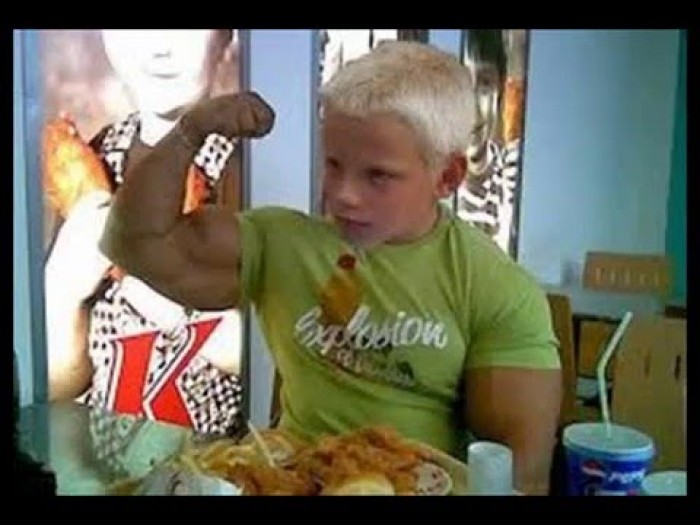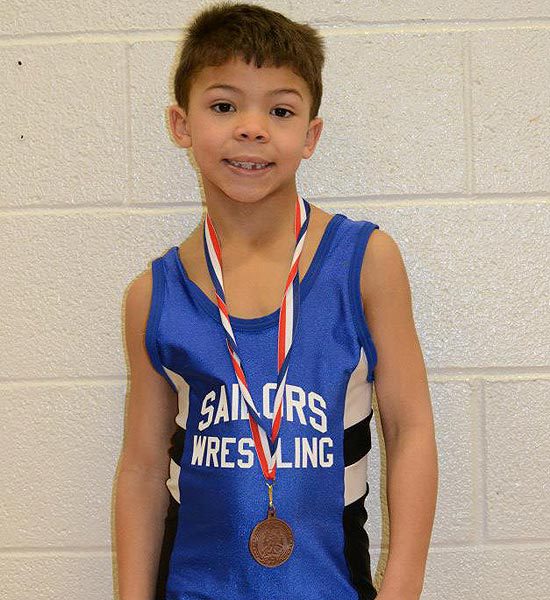Liam Hoekstra: The Extraordinary Story Of A Child With Superhuman Strength
Imagine discovering that your toddler possesses abilities far beyond what's considered normal. That's exactly what happened to the Hoekstra family when they realized their son Liam was no ordinary child. At just 5 months old, Liam could lift his own bodyweight and perform feats that would challenge even professional athletes. This isn't fiction—it's the incredible story of Liam Hoekstra, the boy with superhuman strength.
From the moment he was born, Liam stood out from other children his age. While most babies are still learning to roll over, Liam was performing exercises that would make fitness enthusiasts jealous. His unique abilities captured the attention of scientists, doctors, and the media worldwide. But what makes Liam's story even more fascinating is the science behind his extraordinary powers.
As we dive deeper into Liam's life, you'll learn about the genetic mutation responsible for his strength, how it affects his daily life, and what this means for the future of human potential. So buckle up because this isn't just a story—it's a glimpse into the possibilities of human evolution.
Read also:Ashley Ray Leak The Untold Story Facts And What You Need To Know
Table of Contents
The Genetic Mutation Behind Liam's Strength
Liam's Early Years: A Timeline of Extraordinary Feats
Scientific Studies and Research on Liam's Condition
Health Implications: The Pros and Cons of Having Superhuman Strength
A Day in the Life of Liam Hoekstra
Read also:Streaming Sensation Unveiling The World Of Vegamovies
The Media's Role in Shaping Liam's Story
Future Implications for Genetic Research
Ethical Considerations: Should We Pursue Similar Mutations?
Conclusion: What Liam's Story Means for Humanity
Biography
Before we dive into the science and implications of Liam's condition, let's take a closer look at the man behind the headlines. Below is a brief biography of Liam Hoekstra, including key details about his life and background.
Biodata
Here's a quick overview of Liam's personal information:
| Full Name | Liam Hoekstra |
|---|---|
| Birth Date | March 26, 2005 |
| Place of Birth | Grand Rapids, Michigan, USA |
| Parents | Mark and Mary Hoekstra |
| Known For | Superhuman strength due to a rare genetic mutation |
Liam's journey began when he was adopted by Mark and Mary Hoekstra, who quickly noticed something extraordinary about their new son. What they initially thought was a strong-willed toddler turned out to be something far more remarkable.
The Genetic Mutation Behind Liam's Strength
So, what exactly makes Liam different from the rest of us? The answer lies in a rare genetic mutation that affects the production of myostatin, a protein responsible for regulating muscle growth. In Liam's case, his body produces significantly less myostatin, allowing his muscles to grow larger and stronger than average.
This condition, known as myostatin-related muscle hypertrophy, has been observed in a few other cases around the world. However, Liam's case is particularly noteworthy due to the severity of his mutation and the impact it has on his physical abilities.
Liam's Early Years: A Timeline of Extraordinary Feats
From the moment he was born, Liam's life has been anything but ordinary. Here's a timeline of some of his most impressive achievements:
- At 5 months old, Liam could lift his own bodyweight using just one arm.
- By 8 months, he was performing push-ups and sit-ups with ease.
- At 2 years old, Liam was able to perform chin-ups, a feat that challenges even professional athletes.
These accomplishments might sound like something out of a comic book, but they're all real and documented. Liam's parents quickly realized that their son was special and sought the help of medical professionals to understand his condition better.
Scientific Studies and Research on Liam's Condition
Since Liam's condition was first identified, scientists and researchers have been studying him to learn more about the role of myostatin in muscle development. One of the most notable studies was conducted by Dr. Se-Jin Lee, a leading expert in the field of muscle biology.
Dr. Lee's research has shown that individuals with myostatin-related muscle hypertrophy exhibit increased muscle mass and strength without the typical trade-offs associated with other forms of muscle enhancement. This has led to exciting possibilities for treating conditions like muscular dystrophy and sarcopenia, a condition characterized by age-related muscle loss.
Health Implications: The Pros and Cons of Having Superhuman Strength
While Liam's condition grants him incredible strength, it also comes with its own set of challenges. For one, his muscles require constant care and maintenance to prevent injury. Additionally, the lack of myostatin can lead to other health issues, such as joint problems and cardiovascular strain.
Despite these challenges, Liam's parents remain optimistic about his future. They work closely with medical professionals to ensure he receives the best possible care and support as he continues to grow and develop.
A Day in the Life of Liam Hoekstra
So, what does a typical day look like for Liam? While he may possess superhuman strength, his life isn't all about lifting weights and performing feats of athleticism. Like any other child, Liam enjoys playing with friends, going to school, and spending time with his family.
However, his daily routine also includes regular exercise and physical therapy sessions to maintain his muscle health. His parents have created a balanced lifestyle that allows him to pursue his interests while managing the unique challenges of his condition.
The Media's Role in Shaping Liam's Story
Since Liam's story first broke, he's been the subject of countless news articles, documentaries, and interviews. While the media attention has helped raise awareness about his condition, it's also brought its own set of challenges.
Liam's parents have worked hard to ensure that their son's story is told accurately and respectfully. They've collaborated with journalists and filmmakers to create content that educates and informs without exploiting Liam's unique abilities.
Future Implications for Genetic Research
Liam's case has opened up new avenues for research into genetic mutations and their potential applications in medicine and sports. Scientists are exploring ways to harness the benefits of myostatin-related muscle hypertrophy while minimizing its risks.
This research could lead to groundbreaking treatments for a variety of conditions, from muscle wasting diseases to athletic performance enhancement. However, it also raises important ethical questions about the future of genetic engineering and its impact on society.
Ethical Considerations: Should We Pursue Similar Mutations?
As the possibilities of genetic engineering continue to expand, so too do the ethical dilemmas surrounding its use. Should we pursue the development of similar mutations in humans? What are the potential risks and benefits? These are questions that scientists, ethicists, and policymakers are grappling with as they consider the future of genetic research.
For now, Liam's story serves as a reminder of both the potential and the challenges of genetic innovation. As we continue to explore this fascinating field, it's important to approach it with caution and responsibility.
Conclusion: What Liam's Story Means for Humanity
In conclusion, Liam Hoekstra's story is more than just an incredible tale of superhuman strength—it's a glimpse into the possibilities of human evolution. Through his unique condition, we've learned valuable lessons about the role of genetics in muscle development and the potential applications of this knowledge in medicine and sports.
As we continue to study and understand Liam's condition, we must also consider the ethical implications of our discoveries. It's a delicate balance, but one that holds the promise of transforming lives for the better.
So, what do you think? Should we pursue the development of similar mutations in humans? Leave your thoughts in the comments below and share this article with your friends to keep the conversation going. Together, we can shape the future of genetic research and its impact on humanity.


